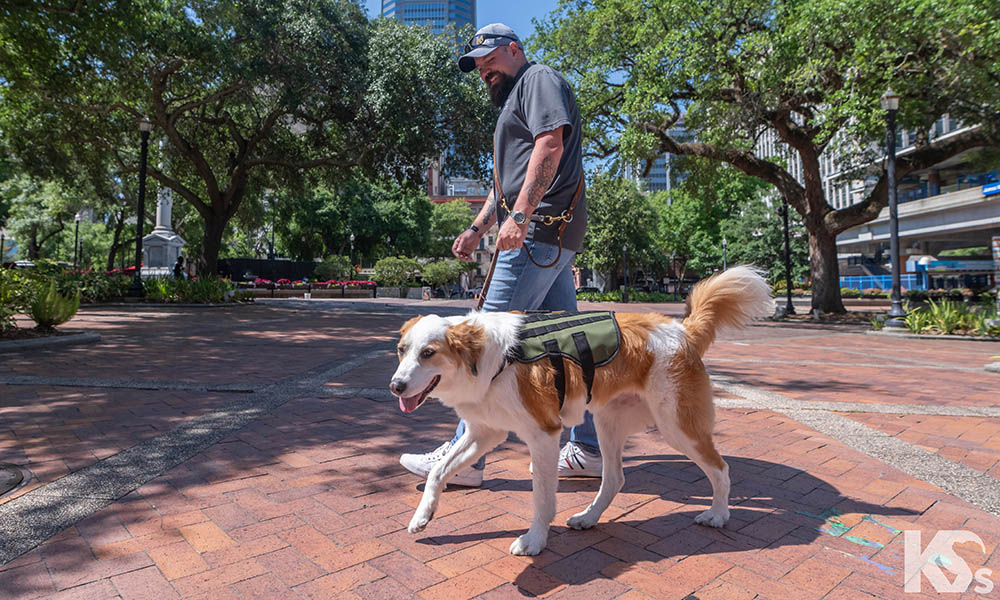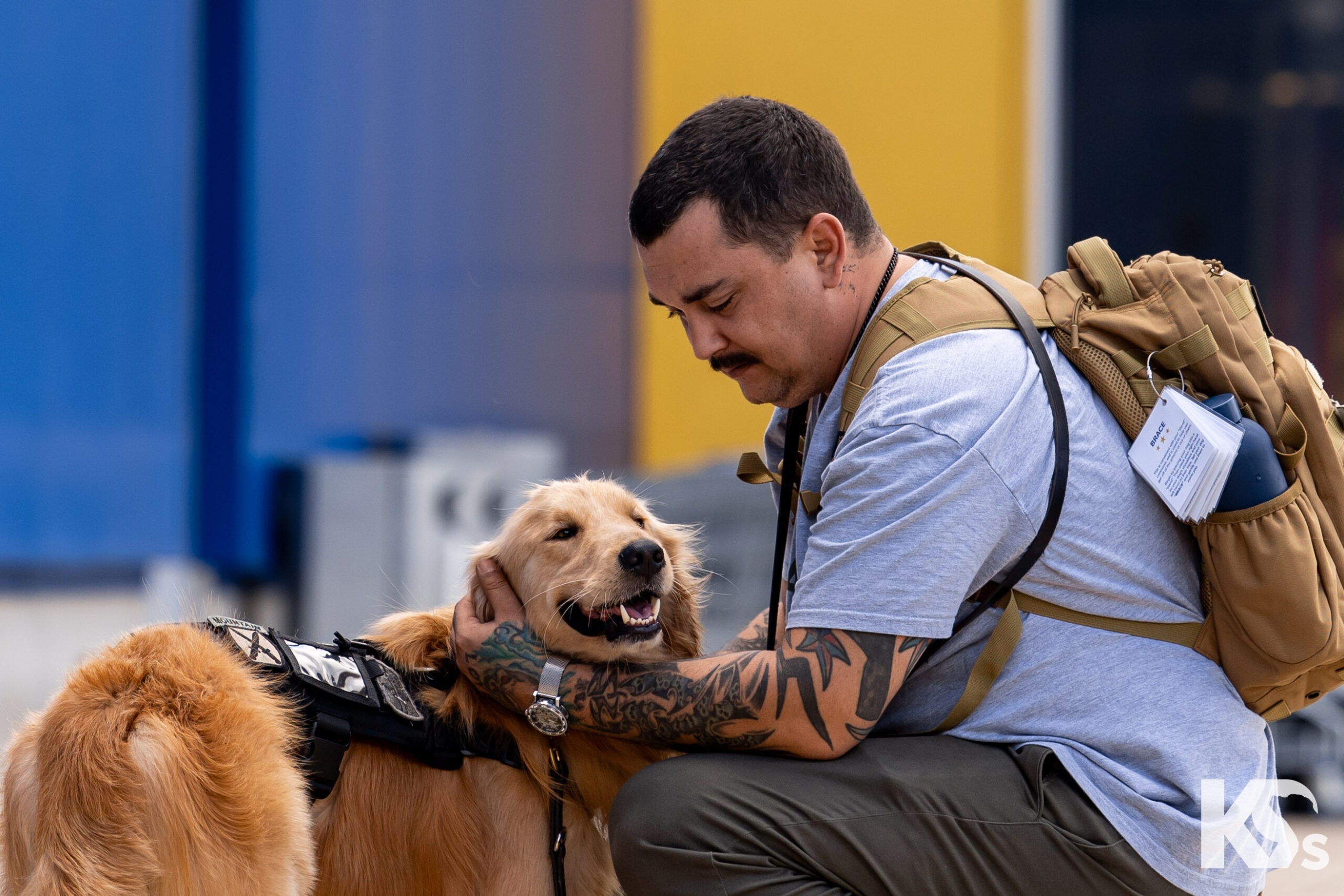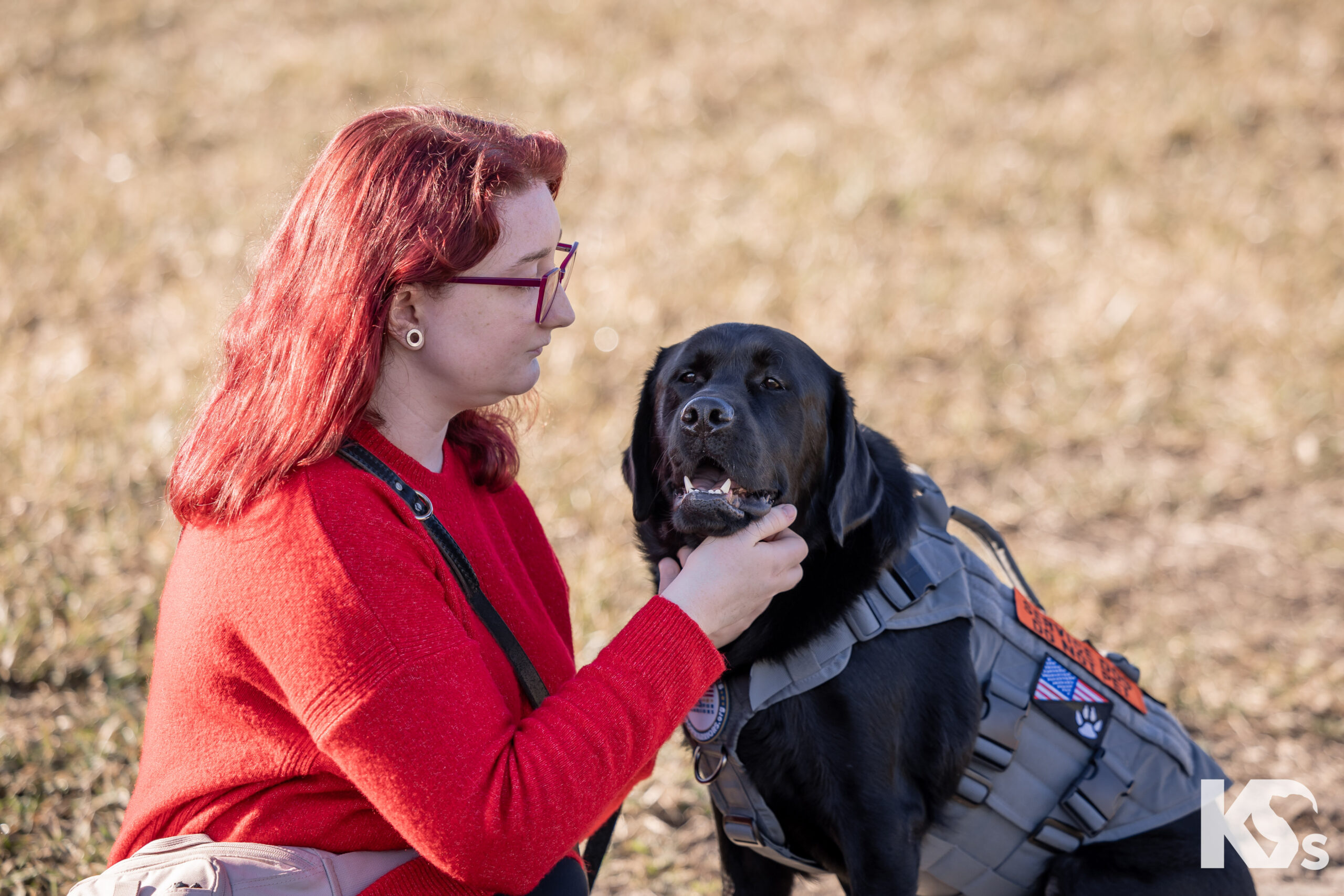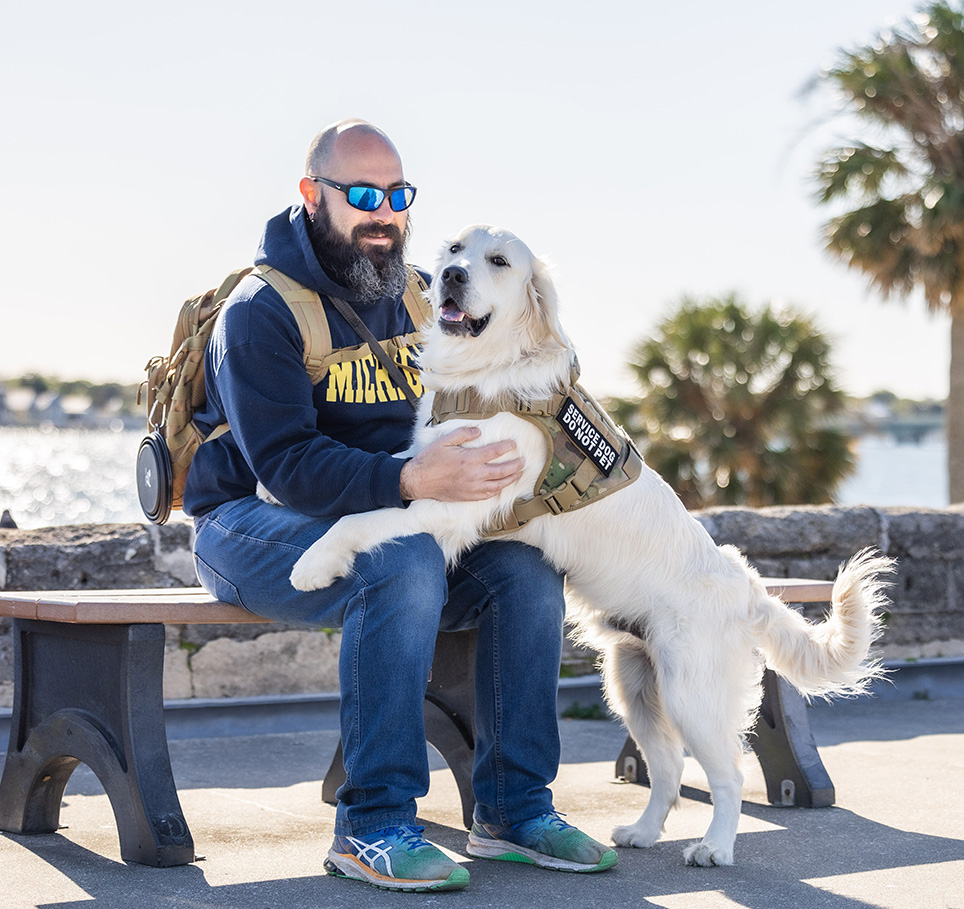“With PTSD, I was a prisoner to my symptoms. I was living my life like I had received a terminal diagnosis. I had so much compound trauma that I was kind of a shell of a person for a long time. I just kind of existed.” – Army Veteran, Jodie Revils
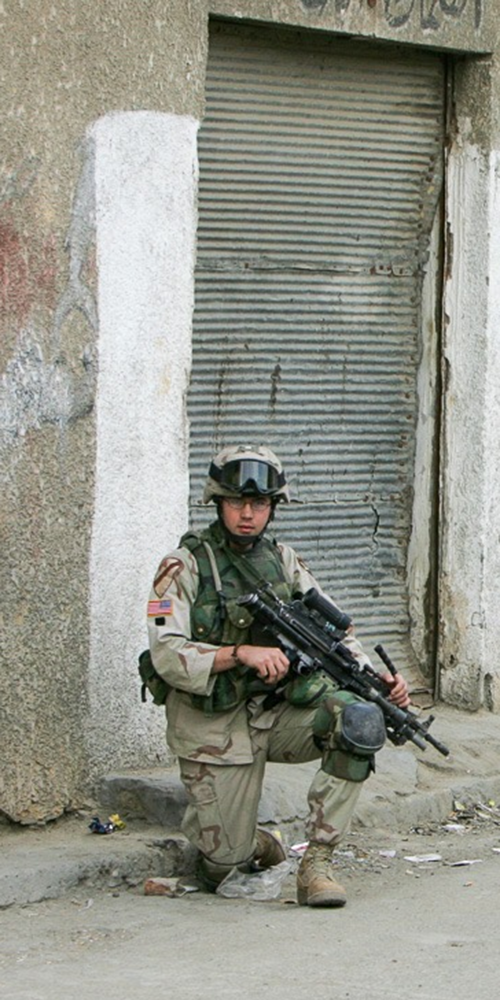
When Jodie Revils (Katy, Texas) joined the Army in 2002 as an 18-year-old infantryman it would have been inconceivable to anticipate the agonizing sequence of torment he’d be forced to endure, and ultimately be unable to truly confront for another 17 years.
Having grown up on a tobacco farm in rural Kentucky, Revils had already navigated through a less than picture-perfect childhood. After deploying to Iraq in March 2004 as a 20-year-old, his unit (1st Cavalry Division) was thrown into an insurgent hotbed to deescalate severe combat situations.
“Our goal was to clear out insurgent forces,” Revils recalls. “Our unit was moving around to different hotspots conducting route clearance efforts to make it safe for our other military units in the area. There were a lot of incidents and ambushes to deal with, and there was never a point where we didn’t have something combat related to do.”
While still deployed, Revils began experiencing what medical professionals refer to as “false visual images,” which persisted long after he returned home from deployment.
“I was seeing things that weren’t there, whether it was in a parking lot, restaurant or grocery store. My brain was always looking for a threat. Any movement I saw in my peripheral vision, my brain was telling me it was a person ducking behind a vehicle or a building. My whole existence revolved around threat management. It was exhausting.”
Struggling to Find His Place
The condition stemmed from combat-related traumatic brain injury along with the high-pressure environment his unit was staring in the face each day of their deployment. Hoping to alleviate his symptoms, Revils got out of the Army in late 2005 and became a police officer.
“Being trained for combat doesn’t really apply to the civilian world. I hadn’t gone to college. I had no work experience. I needed the money and had nothing else to do.”
In hindsight, Revils acknowledges that being a police officer probably wasn’t the best way to mitigate his symptoms. He was having panic attacks and encountering stressful situations regularly, which continued to perpetuate his mental demons. He also missed the camaraderie that he felt while in the military.
“In my head I would have to separate my infantry experiences from being in ‘police mode.’ I was still handling violent, severe situations, just in a different manner. It was conflicting mentally and kind of tore my brain apart.”
Hope for Structure
He decided to rejoin the Army in an active drill and reserves capacity, changing his MOS to civil affairs instead of infantry. It’s a role he served for five years.
By early 2011 Revils remained unable to effectively cope with his PTSD. Wanting to address his symptoms head on, he left in favor of returning to an active-duty military role.
“At that point my symptoms had grown exponentially. But there was a stigma back then to keep it to yourself, or you’d risk never being able to find a job.”
Revils returned to the Army in an active-duty role, stationed at Fort Bragg, N.C. Butting heads with Army colleagues, he found it virtually impossible to perform his job consistently well.
“Trying to fit into a structured military environment again was difficult. There I was, unable to function in the civilian world or in the military. I didn’t fit in anywhere, and I couldn’t talk about my symptoms. There was nothing left for me.”
There I was, unable to function in the civilian world or in the military. I didn’t fit in anywhere, and I couldn’t talk about my symptoms. There was nothing left for me.
Receiving what amounted to an ultimatum to seek help, Revils finally decided to divulge the debilitating mental anxieties he’d been working so hard to keep hidden. After an on-base health provider suggested he was making up his symptoms, an off-base Army clinic presented Revils with a proper diagnosis: severe PTSD.
“They heavily medicated me. There was a different medication for each symptom, which added up to 20 pills a day. I couldn’t carry on a conversation. I had no emotion. I was like a vegetable.”
“I remember the container of pills was always full,” said Nancy, Revils’ wife. “He’d just be sitting on the couch, and I thought to myself, ‘this was going to be our permanent situation.’”
Not capable of functioning in a customary capacity, Revils exited the military in August 2013. Looking for work upon returning to the civilian world, he was forced to stop taking his medications. This prompted a vicious cycle.
“I was either highly medicated and couldn’t function or speak to anyone, or I was angry, feeling suicidal, and causing problems with everyone. Back and forth. There was no answer.”
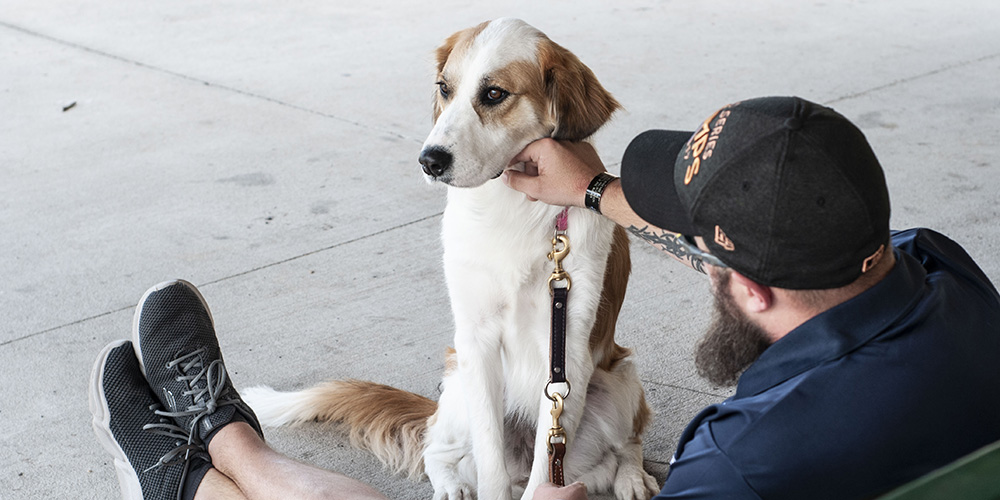
Seeking Help
Revils sought out a VA facility, trying every program they offered to combat his PTSD. Around the same time, Revils’ family began to mirror his own symptoms.
“Nancy would spend all day with her stomach in a knot, feeling responsible for keeping my symptoms under control. My daughters were withdrawing from their friends and displaying the same hypervigilance that they picked up from watching me. And I was desperate to fix it.”
After none of the VA programs seemed to make much of a positive impact, an opening at a veterans’ mental health retreat program surfaced at the end of 2014.
“I met someone who spoke about their own false visual images. Prior, I was convinced I didn’t have PTSD because no one I’d been in contact with had symptoms that matched the severity of mine. I was living my life like I had received a terminal diagnosis, and this gave me hope that what I had could be treated.”
The realization also motivated Revils to temporarily dispel his suicidal thoughts, offering him inspiration to seek out additional research and help.
I learned enough about my symptoms to understand what I was going through, but I still didn’t quite know how to fix them.
About a year later, in 2016, he took part in what equated to an in-patient program at the “Home Base” facility in Boston, which specializes in PTSD and head injuries.
“They helped alleviate my headaches, but the PTSD, depression and anxiety remained. I learned enough about my symptoms to understand what I was going through, but I still didn’t quite know how to fix them. But it really started my process of recovery.”
During the program, Revils experienced a severe panic attack that evolved into a flashback, which gave the nurses an idea.
“They brought in a facility dog to give me something else to focus on, and it helped me relax. They took note of that and started to bring the dog to my therapy sessions, which allowed me to speak about my experiences without severe reactions.”
Revils had grown up around Labradors and loved dogs. The facility dog handler was familiar with K9s For Warriors and recommended he seek out the program.
“I went back home and was assigned to a civilian healthcare therapist for weekly sessions. The therapist had actually referred previous patients to K9s For Warriors, and they had seen success in the program.”
Upon receiving a second independent recommendation, Revils reluctantly decided to apply.
“I was skeptical that a Service Dog still wasn’t going to fix my symptoms medically. But I had tried everything else. I was at the end of my rope.”
“The anticipation – we were excited and hoping for the best,” Nancy recalls. “In my mind, it couldn’t worsen our situation. It had to work.”
A Dog Named Donna
Taking part in the November 2019 training class, when “dog day” came around (veterans are paired with their Service Dog) Revils hoped to see the familiar face of a Labrador staring back at him.
“I had such a positive connection to Labradors since they’d helped me through tough times growing up. I wanted a Labrador Service Dog so badly. But when the trainer came around the corner, I saw this beautiful, fluffy not Labrador. My heart sank.”
Perhaps sensing his disappointment, Donna, a Pyrenees-mix rescue, put her paw on his leg as if to comfort him.
“At that point, my life changed. Nancy had stood by me and helped look for solutions, and without that support I wouldn’t have been able to progress to the point where Donna would change my life. I was going to invest my time and energy into this dog and try to make this work.”
With a renewed sense of optimism, the new Warrior/K9 team still had a long road ahead of them.
“The training was uncomfortable. With my severe symptoms, I was frustrated, and there were times when I didn’t want to participate. I was able to get through it by drawing upon each previous experience and focusing on Donna.”
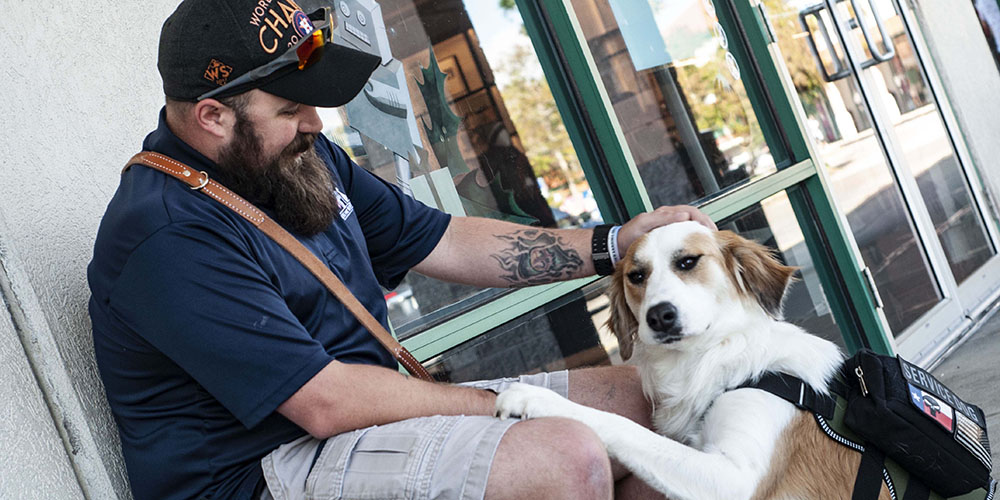
Returning Home
After Revils returned home with Donna, there was an adjustment period for everyone.
“It was nerve wracking,” Nancy remembers. “I’d ask Jodie if he was okay, and eventually didn’t have to ask anymore, thanks to Donna. I got my husband back. If Donna wasn’t around, he might not be here. Our lives would be completely different.”
“Nancy no longer had a job to do,” Revils said. “She got used to Donna helping me, and I could see that reverse a lot of her anxiety. The kids started getting excited and wanting to go out in public again. And I was now able to express how much I care about them in a tangible way and give them the attention they deserve.”
Donna's Impact
The impact Donna was now making on Revils was immense.
“Without Donna, I wouldn’t have a life. Period. I now have a choice about going out in public. She notifies me most times when my symptoms come up before I even notice them. The sheer freedom she provides is lifechanging.”
“I know the struggles he went through firsthand,” Nancy says. “When he shares his story, he doesn’t leave anything out. The good, the bad and the ugly. He’s reaching other veterans who hopefully will give a Service Dog a try. I think it’s what he’s meant to do now.”
Nearly two decades removed from when he first joined the Army, Revils now jumps at the opportunity to reach others struggling with their own PTSD battle.
“Given my history of being told not to seek help, it’s kind of a personal mission to speak to as many veterans as I can to take some of the stigma away and empower them to seek help. And to show them that there are solutions, like K9s For Warriors.”
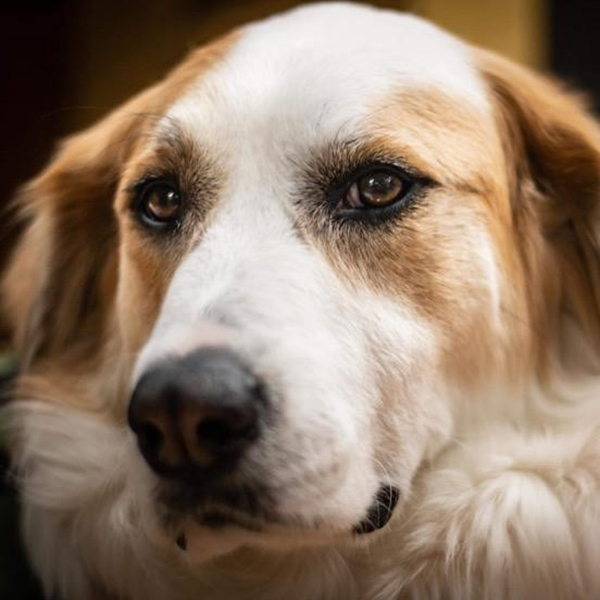
Meet Donna
Jodie & Donna’s Graduation Date
November 2019
Donna’s Sponsor
Florida Department of Veteran Affairs
Name Meaning
Donna was named after Donna Weida, a K9s For Warriors volunteer who lost her battle with cancer.
Donna’s Rescue Shelter
Bradford County Animal Control

